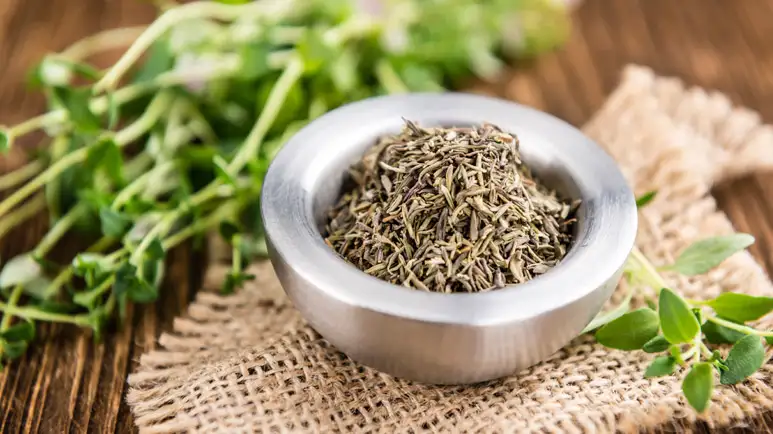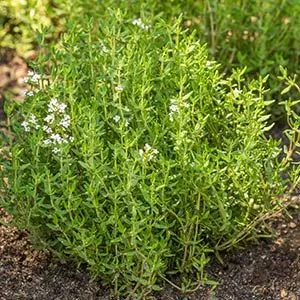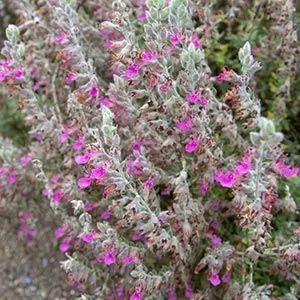Thyme: This Green Gem May Soothe Your Pet's Skin
If your pet is constantly itching due to yeast infections, adding this pungent herb to their diet may help ease their discomfort. Simply sprinkle it over their meals or add to their homemade treat recipes.

STORY AT-A-GLANCE
- The major beneficial constituent in thyme is called thymol, a naturally occurring phenol monoterpene with potential therapeutic properties. It has antioxidant, anti-inflammatory, antispasmodic, anthelmintic and antimicrobial effects
- Adding a few natural antifungal foods like thyme to your pet’s diet may help eliminate chronic yeast infections
- Thyme can be used either fresh or dried, and both are OK for pets
- You can add a small amount of thyme to your pet’s food before serving it to them or use it as an ingredient for their homemade pet treats or bone broth
- Thyme is easy to grow, meaning both you and your pet can get instant access to this nutritious herb all year round
Editor's Note: This article is a reprint. It was originally published June 26, 2023.
Herbs and spices are integral to the human diet, because not only do they add flavor and aroma to your favorite dishes, but they also offer a host of benefits that can impact your overall well-being. The good news is that many of the herbs that are safe for you can be good for your animals, too.
One example is thyme. Well-loved for the fragrance and flavor it adds to soups, sauces and pasta, this Mediterranean herb is also highly valued for its antibacterial, insecticidal and antifungal properties — a wonderful boon to your cats and dogs. Keep reading to learn more about thyme’s potential benefits for pets.
Facts About Thyme — Can It Be Good for Pets?
A pungent herb belonging to the mint family (Lamiaceae), thyme (Thymus vulgaris) comes from a low-growing shrub that originated from the Mediterranean region. Known for its medicinal, ornamental and dietary uses, the flowers, leaves and essential oil from this plant have been used to treat various symptoms and complaints.1,2
Due to its ability to hybridize fast, there are over 350 species of thyme, though the most common is Thymus vulgaris. The leaves grow on thin stems in clusters and come in different shades of green, from pale green to deep green, olive, bronze and silver.
Thyme can be used either fresh or dried, and both are OK for pets. You can add a small amount to their food before serving it to them. This herb is rich in nutrients, including flavonoids and phenolic antioxidants such as lutein, zeaxanthin, apigenin and naringenin. The leaves also contain potassium, calcium, iron, magnesium, selenium and manganese. However, these are not the primary compounds that give thyme its potent benefits.3
Did You Know?

The first known instance of cultivating thyme was in 3000 BC in Persia. The Greeks believed that it helped protect against curses and evil entities, while the Egyptians considered thyme a symbol of luck and happiness.4
Thymol — The Beneficial Component in Thyme
“The major beneficial constituent in thyme is called thymol, a naturally occurring phenol monoterpene with potential therapeutic properties.”
Aside from antioxidant, anti-inflammatory and antispasmodic effects,5 it also has anthelmintic and antimicrobial activity, and is believed to be effective against Gram-negative and Gram-positive bacteria, as well as against molds and yeasts.6 Here are some of the advantages of thymol for your pet:
- Helps eliminate parasites — Thymol may have antiparasitic effects and may be effective against Toxoplasma gondii, Trypanosoma ssp., Plasmodium falciparum, Leishmania spp. and Giardia duodenalis. Echinococcus, a type of tapeworm species that can infect dogs, pigs, sheep, goats and cattle, can be eliminated by thymol.7
- Keeps your pet’s mouth healthy — Thymol acts as a powerful oral antiseptic that may help fight bad breath and gingivitis in pets.8,9 Other essential oils that may have this effect include eugenol, clove, eucalyptol and methanol.10
- May help ease ear infections — Thymol’s fungicidal and bactericidal activity may be beneficial for dogs suffering from otitis externa. According to one study, “Oregano oil, thyme oil, carvacrol and thymol exhibited antibacterial activity against all bacterial and fungal isolates tested.”11
If you need a pet-safe cleaner, you can also dilute a few drops of thyme oil in water. Thymol works as an all-natural alternative to bleach and is a natural disinfectant and odor eliminator.12 Don’t give thyme essential oil to pets internally, unless instructed by your veterinarian to do so.
Don’t Confuse Common Thyme with Cat Thyme

If you have a kitty at home, you may have heard of “cat thyme;” don’t confuse it with common thyme. Called Teucrium marum, this mounding, tender perennial has gray-green leaves tipped by pink flowers that bloom in the summer. It’s actually a germander, and its effects on kitties can be likened to that of catnip (but you might find the musty odor unpleasant).
Thyme May Help with Chronic Yeast Infections
Yeast is a spore-like type of fungi that reproduces via a process known as budding, in which portions of the organism’s cell-body break off to form a whole new yeast organism. Many dogs suffer from yeast infections, particularly in the skin and ears. If your dog has this problem, hands-down the most important element to addressing it is diet.
In addition to correcting your dog’s nutrition by removing proinflammatory carbs to balance flora levels naturally, add a few natural antifungal foods to the diet, and thyme is one example. A 2019 study found that the thymol in thyme may help eradicate a type of yeast called Malassezia pachydermatis, which causes otitis and dermatitis in dogs.13
You can add small amounts of thyme to their meals. Fresh garlic, parsley and oregano are also natural antifungal foods that can help reduce the level of yeast. Adding fermented veggies to your dog's meals can also be very beneficial, along with raw, unfiltered apple cider vinegar and coconut oil, which contains caprylic acid that has anti-Malassezia properties.
How to Give Thyme to Your Pets
Whether fresh or dried, thyme can be safely given to pets in moderate amounts. The American Society for the Prevention of Cruelty to Animals considers it nontoxic to dogs and cats. You can sprinkle thyme over their pet food or use it as an ingredient in their homemade pet treats. Just make sure these pet treats constitute only 10% of their daily caloric intake. Adding thyme to homemade bone broth is also a good idea.
Top Thyme-Producing Countries

The main countries that supply dried thyme leaves to the U.S. are Spain, Jamaica and Morocco. Meanwhile, thyme oil comes mainly from Spain and France. Other thyme-producing countries include Portugal, Germany, Italy, North Africa and Canada.14

Growing Your Own Thyme Is Sustainable and Eco-Friendly
If you have a garden, thyme is one of the herbs that you can easily plant, whether in containers or directly in the ground. This plant thrives in a sunny and dry spot, and grows best in well-drained soil with a little bit of compost. It’s a low-maintenance plant that doesn’t require a lot of watering15 or space — you can even grow it in pots on your windowsill.
Growing your own thyme can be sustainable and good for the environment, especially if you consider that most store-bought herbs are wrapped in single-use plastic packaging that ends up in landfills. Buying and then throwing away unused herbs also contribute to the food waste problem.16 By growing your own thyme, not only are you cutting back on unnecessary food packaging, but you can also ensure that you’re always getting freshly picked herbs that deliver plenty of flavor and nutrition to you and your pets.
Sources and References
- 1 Medical News Today, October 24, 2024
- 2 Britannica, Thyme
- 3 Nutrients 2022, 14(10), 2104
- 4 The Sage Gardenuity Blog, March 27, 2023
- 5 Phytother Res. 2018 Sep;32(9):1688-1706
- 6 Molecules. 2020 Sep 9;25(18):4125
- 7 Open Journal of Ecology, Vol.11 No.03 (2021)
- 8 PangoVet, December 1, 2024
- 9 Oral Microbiol Immunol. 1995 Aug;10(4):241-6
- 10 dvm360, May 4, 2017
- 11 Veterinary Dermatology, Volume 30, Issue 6, December 2019, Pages 524-e159
- 12 Arabian Journal of Chemistry. Volume 13, Issue 12, December 2020, Pages 9243-9269
- 13 J Mycol Med. 2019 Dec;29(4):375-377
- 14 Science Direct, Thyme
- 15 University of Florida's Institute of Food and Agricultural Sciences, "Spice Up Your Life: A Beginners Guide to Growing Thyme"
- 16 edn, October 7, 2019











